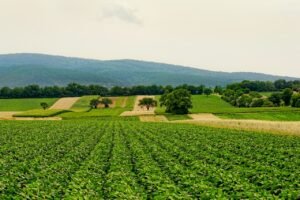
Urban farming has gained popularity in recent years as an innovative solution to food production in cities. However, it is essential to acknowledge the limitations that this practice faces. In this article, we will explore the various challenges urban farming encounters, such as limited space, lack of access to resources, and the impact of environmental factors. By understanding these limitations, we can better navigate the complexities of urban agriculture and maximize its potential to create sustainable and resilient food systems.
Exploring the Limitations of Urban Farming

Limited space
Urban farming faces various challenges due to the limited availability of space. Finding available land to establish farming operations can be a major hurdle. In densely populated cities, suitable plots of land may be scarce, making it difficult to secure space for agricultural activities. Moreover, urban infrastructure often imposes constraints on farming operations, such as zoning regulations and building codes. These limitations can further restrict the potential scale and scope of urban farming projects.
High start-up and operational costs
The costs associated with urban farming can be a significant barrier for aspiring farmers. Land acquisition in urban areas tends to be expensive, driving up the initial investment required. Additionally, urban farming often necessitates the use of specialized equipment, such as hydroponic systems or vertical farming structures, which can add to the financial burden. The costs of utilities, such as water and electricity for irrigation and artificial lighting, also contribute to the overall expenses of operating an urban farm.

Limited crop variety
Urban environments may not be equally suitable for growing all types of crops. Factors such as limited sunlight, restricted space, and variations in microclimates can constrain the variety of crops that can be successfully cultivated in urban farms. Certain plants may require specific conditions or larger areas for crop rotation, which can be challenging to achieve in urban settings. Maintaining a diverse range of crops on a large scale can prove to be difficult due to these limitations.
Weather and climate challenges
Urban farmers have limited control over external weather conditions, making them more vulnerable to the effects of climate change. Extreme weather events, such as storms, heatwaves, or heavy rainfall, can have adverse impacts on crops grown in urban areas. Moreover, microclimate variations within urban settings can further complicate farming operations, as different areas may experience distinct weather patterns. These challenges necessitate careful consideration and adaptation strategies to mitigate the risks associated with weather and climate fluctuations.

Quality and safety concerns
One of the limitations of urban farming is the risk of soil contamination. Urban areas often have a history of industrial activity or pollution, which can lead to soil degradation and contamination by heavy metals or pollutants. These contaminants pose potential risks to both crop health and consumer safety. Additionally, urban farming may expose crops to harmful substances present in the surrounding environment, such as vehicle emissions or chemical residues. Ensuring the quality and safety of produce becomes crucial in urban farming scenarios.
Limited availability of resources
Access to essential resources is another limitation faced by urban farmers. Water sources may be limited or expensive to obtain in urban areas, making irrigation a challenging task. Additionally, the availability of organic matter for composting can be restricted in urban settings. This limits the ability to create nutrient-rich soil amendments for sustainable farming practices. Furthermore, urban farmers may face challenges in accessing affordable and sustainable inputs, such as organic fertilizers or pest control methods, due to limited availability.
Limited market demand
Urban farmers often encounter challenges in attracting urban consumers. The perception and understanding of agriculture may differ in urban areas, where people may be less familiar with the intricacies of food production. Consumers may also have limited willingness to pay premium prices for locally grown produce. Established agricultural suppliers, such as large-scale commercial farms, may also pose competition, making it difficult for urban farmers to capture a significant market share. Navigating these market challenges requires innovative marketing strategies and close collaboration with the local community.
Difficulty in scaling up
Expanding urban farming operations can be a challenging endeavor. The constraints imposed by the limited infrastructure in urban areas can hinder the scalability of farming projects. The lack of available space for growth presents a significant hurdle for farmers looking to expand their operations. Additionally, securing long-term leases on urban land can be challenging, which further limits the ability to scale up agricultural activities. Overcoming these obstacles requires strategic planning and collaboration with local authorities and landowners.
Energy consumption
Vertical farming, a popular method used in urban agriculture, often requires high energy inputs. Artificial lighting systems are typically employed to provide plants with the necessary light for photosynthesis, contributing to increased energy consumption. Climate control practices, such as maintaining specific temperature and humidity levels, can also be energy-intensive. Balancing the energy demands of urban farming while aiming for sustainability poses a significant challenge for farmers.
Labor-intensive operations
Urban farming can be labor-intensive due to several factors. Firstly, an urban farm may require a highly skilled workforce that possesses specific knowledge related to specialized farming techniques or technology. Proper cultivation and harvesting techniques are crucial for maximizing productivity and ensuring crop health. Additionally, managing logistical and operational challenges, such as transportation and distribution of produce, can be demanding. Addressing these labor-related limitations requires investment in training and developing efficient operational processes.
In conclusion, urban farming faces various limitations and challenges that need to be carefully considered and addressed. The limited availability of space, high start-up and operational costs, restricted crop variety, weather and climate challenges, quality and safety concerns, limited availability of resources, limited market demand, difficulty in scaling up, energy consumption, and labor-intensive operations all contribute to the complexities of urban farming. Despite these constraints, innovative approaches, collaboration, and sustainable practices can help overcome these limitations and pave the way for a thriving urban farming industry.







